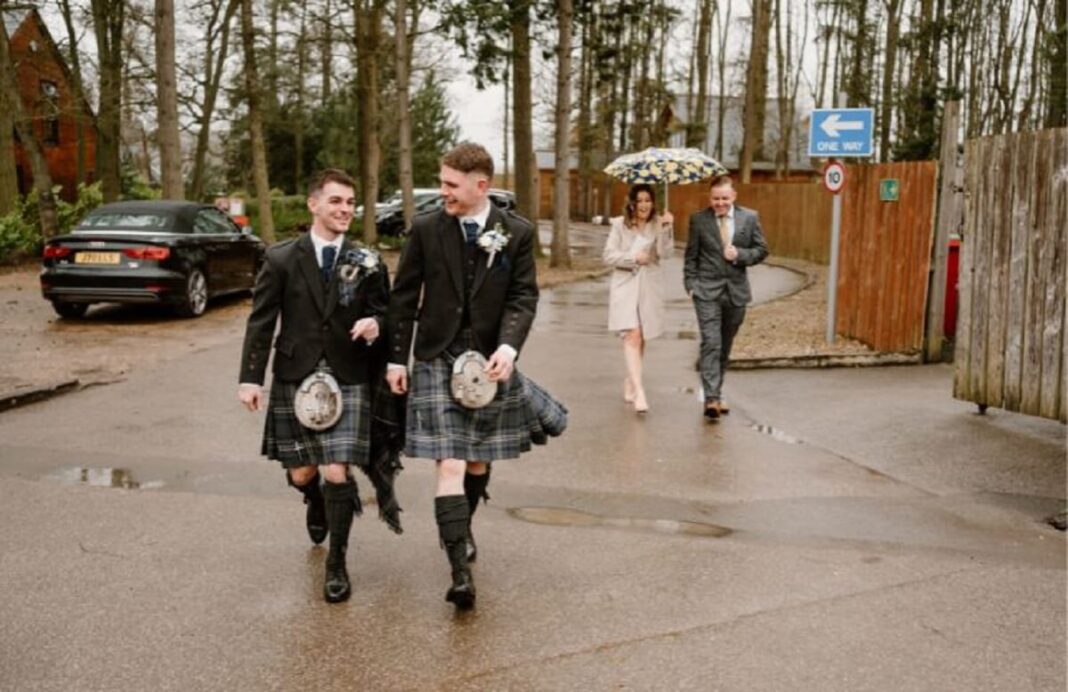For many outsides of Ireland, the kilt is only linked to the Scottish Highlands. But kilts also have a long history of being related to Irish culture, too. Although there are many differences between the kilts of both nations, both nations wear their kilts as a symbol of their ancestral pride and tradition.
The fire speculation regarding the origin of today’s modern Irish kilt continues to be debatable. Many people believed that it was the Lien crotch, however, this was not a traditional Irish kilt. The Lien-crotch is a long tunic, traditionally made from solid-colored cloth, with saffron, black, and green colors.
Contemporary research suggests that kilts in Scotland from the 1850s were created earlier, in Scottish Highlands. These were usually kilts, and their use was continued by Irish units in the British Army after those kilts were first
In the early 20th century and late 19th, the tradition of the kilt reemerged within Ireland as a part of its Gaelic culture. Young people sporting kilts were photographed in the 1910s and early 20th centuries, particularly on political and musical occasions. The rise of Riverdance rapidly extinguished the kilt in Irish dancing.
The tartan starts from during the emergence of Irish nationalism reinforcing Gaelic traditions for life in Ireland.
The Saffron Kilt is the most traditional of several kinds of kilts. It’s commonly a mustard yellow colour and has numerous shamrock designs.
Most Saffron kilts make with woven cloth, but they usually design to be comfortable. Traditionally, they make with shoulder straps approximately ten centimetres apart.
Irish Kilts Tartan: How to Wear it
There are relatively few family clan tartans in Ireland and a lot of clan tartan company in Scotland. Scotland has dozens of types of clan tartans, while in Ireland the number of clan tartans is finite. A few of the most commonplace traditional Irish surnames as their own tartans, including Murphy, O’Neil and Tony Fitzpatrick, which have two tartans registered to its name.
Irish tartans represent the counties or districts of the island of Ireland. People from Ireland would go about wearing the Irish tartan of the county or region where they came from. For example, if you came from Cork, you might habitually wear Cork County Tartan.
There is a tartan, unique to each of the four provinces of Ireland, Connacht, Leinster, Munster, and Ulster, as well as many associated with smaller counties.
The differentiation between Scottish and Irish kilts is likely the biggest distinction between the two kinds of kilts for men. Irish National tartan is oftentimes a choice for those who may associate themselves with the many degrees of one of Ireland’s areas, possibly because their origins come from other areas.
Celtic Titles Tartan
The tartan used by Celtic Titles is the Irish tartan, known for its distinct mix of elegance, color, and style. This tartan encompasses the entire state of Ireland, so this kilt is a welcome sight at any gathering of Irish.
Irish Kilt Accessories &Traditional Clothing
Many accessories that are actually wearing with a kilt are giveaways for identifying guilt.
Sporran
These pockets to the front of the kilt are a traditional accessory in both Scotland and in Ireland, and there are special Irish sporrans for St. Patrick’s Day with shamrocks and green accents if you wish to receive particularly patriotic.
Crest
Whereas in Scotland customary Scottish attire includes displaying your family crest in the tartan, this is much less common in Ireland.
The Kilkenny
You can wear it at a formal event, but this is generally the jacket with the Irish kilt for more casual occasions. Wear it with a standard collared shirt, waistcoat, and necktie, and is often a shade of Irish green.
Socks
Historically, cream knee-high socks with ornamental bows to match your tartan were with the Irish kilt. The Irish military really wears black socks with their Saffron kilts. A plaid outside of the conventional cream and black colors when wearing a Day jacket, but they are generally in the casual setting.
Ghillie Brogues
In the Western regions of Scotland and Ireland, men typically wore these with a long, plaid kilt. With leather lacing, the shoes are difficult to lace but once done correctly are ideal for dancing. If you are looking for some traditional highland wear and tartan kilts for men, you can discover our collections at kilt and kilts today!


